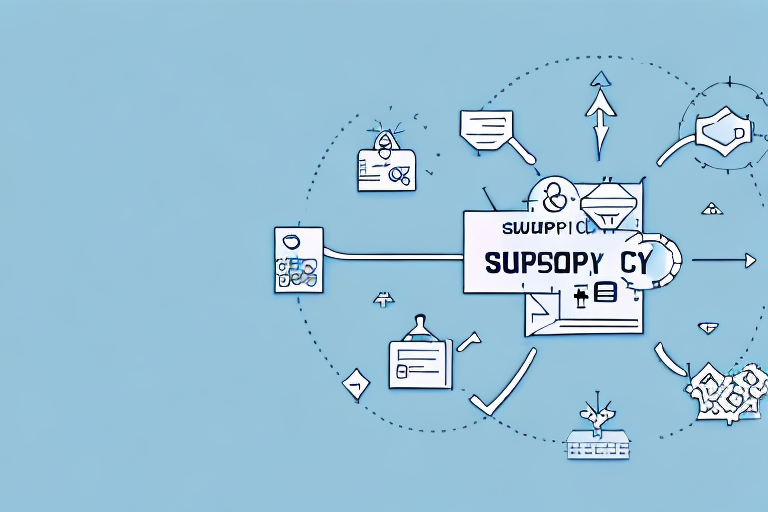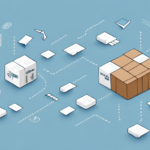Understanding the Export Declaration Process in Supply Chain Management
Export declarations are a critical component of supply chain management that directly influence a company's effectiveness in international trade operations. These declarations involve the documentation required to export goods or products to other countries. An export declaration typically includes comprehensive details about the product, trade routes, and the parties involved in the transaction. Compliance with export declaration requirements is mandatory in most countries and serves multiple purposes, including customs clearance, facilitating trade financing, and generating accurate trade statistics.
What is an Export Declaration and Why is it Important in Supply Chain Management?
An export declaration is a document submitted to the customs authority of the exporting country, detailing the nature, value, and origin of goods being exported. According to the World Trade Organization (WTO), accurate export declarations are essential for ensuring compliance with international trade laws and facilitating smooth cross-border transactions.
This declaration acts as a comprehensive record of the transaction and is legally required to streamline customs processes, thereby avoiding potential legal complications arising from non-compliance. Effective export declarations are vital in international trade as they:
- Facilitate customs clearance
- Avoid legal issues related to regulatory non-compliance
- Enable accurate tracking and monitoring of goods within the supply chain
Moreover, export declarations enhance supply chain management by providing businesses with valuable data to optimize their operations. Analyzing this data helps identify trends and patterns in export activities, leading to increased efficiency, cost reductions, and improved performance in the global market.
The Role of Customs in the Export Declaration Process
Customs authorities play a pivotal role in the export declaration process by ensuring that all exports comply with relevant trade regulations. They verify the details provided in the export declaration against various documents, such as invoices, packing lists, and bills of lading. Additionally, customs implement security measures to prevent the export of prohibited or illicit goods. According to the International Trade Administration, effective customs oversight is crucial for maintaining the integrity and security of international trade.
Customs officials are also responsible for the collection of duties and taxes on exported goods. They determine the appropriate tariff classification and valuation of products, calculating the necessary duties and taxes owed. This revenue supports government programs and services. Furthermore, customs agencies provide valuable export data and statistics that businesses and policymakers use to inform trade decisions.
Navigating the Different Types of Export Declarations
Export declarations come in various forms, including paper-based declarations, electronic declarations, single declarations, and variant declarations. The appropriate type of declaration depends on factors such as the nature of the goods being exported and the destination country. Understanding these different types is essential for ensuring compliance with all export regulations.
For instance, electronic export declarations (EED) have become increasingly popular due to their efficiency and accuracy. According to ShipScience, electronic declarations can significantly reduce processing times and minimize errors compared to traditional paper-based methods.
Additionally, certain countries may require extra documentation or permits for specific goods, such as hazardous materials or controlled substances. Compliance with these requirements is crucial to avoid delays or penalties. Collaborating with experienced customs brokers or freight forwarders can help exporters navigate these complexities effectively.
The Impact of Tariffs and Trade Agreements on the Export Declaration Process
Tariffs and trade agreements, including free trade agreements (FTAs) and preferential trade agreements (PTAs), substantially influence the export declaration process. Exporters must understand the specific product requirements and tax implications of the destination country to accurately complete export declarations. Non-compliance with these regulations can result in penalties, fines, or shipment delays, leading to financial losses.
For example, the recent update to the USMCA trade agreement has altered tariff structures for certain goods exported to North America, providing new opportunities and challenges for exporters.
Tariffs and trade agreements also affect a company's competitiveness in the global market. High tariffs or unfavorable trade agreements can limit access to certain markets, reducing potential customer bases and revenue streams. Conversely, favorable trade agreements and low tariffs can offer competitive advantages by lowering export costs and increasing market share. Staying informed about the latest trade agreements and tariff rates is essential for developing effective export strategies.
A Step-by-Step Guide to Filling Out an Export Declaration Form
Completing an export declaration form accurately is essential to avoid delays and penalties. Here is a step-by-step guide to help exporters navigate this process:
- Gather Required Information: Collect all necessary details, including exporter and recipient information, product descriptions, quantities, and values.
- Select the Appropriate Declaration Type: Choose the correct type of declaration based on the nature of the goods and destination country.
- Complete the Form: Fill in all required fields accurately, ensuring that descriptions match the actual goods.
- Verify Product Classification: Assign the correct Harmonized System (HS) code to determine applicable duties and taxes.
- Submit the Declaration: Submit the completed form through the appropriate channel, whether electronic or paper-based.
- Retain Copies: Keep copies of all submitted documents for your records and potential audits.
Accuracy is paramount; incorrect or incomplete information can lead to customs delays, fines, or legal action. Utilizing software solutions or consulting with a customs broker can streamline this process and ensure compliance.
Common Mistakes to Avoid When Filing an Export Declaration
Filing an export declaration involves several potential pitfalls that can cause significant delays and incur penalties. Here are some common mistakes exporters should avoid:
- Incorrect Value Declarations: Ensure that the declared value matches the invoice to avoid customs discrepancies.
- Inaccurate Product Descriptions: Provide precise descriptions to facilitate correct classification and tariff application.
- Incomplete Documentation: Missing required documents can lead to shipment holds or rejections.
- Wrong Declaration Type: Submitting the incorrect type of declaration can result in processing delays.
- Misclassification of Goods: Assigning the wrong HS code can affect duty calculations and compliance.
To prevent these errors, exporters should conduct thorough reviews of all information and consider professional assistance from customs brokers or trade specialists.
Best Practices for Streamlining the Export Declaration Process
Implementing best practices can significantly streamline the export declaration process, enhancing efficiency and compliance:
- Adopt Electronic Export Declarations: Transitioning to electronic systems can reduce processing times and minimize errors.
- Automate Documentation: Use software tools to automate the creation and management of export documents.
- Regular Compliance Audits: Conduct internal audits to ensure ongoing adherence to export regulations.
- Stay Informed: Keep up-to-date with industry trends, trade regulations, and tariff changes.
- Build Relationships with Customs Officials: Establishing rapport can facilitate smoother resolution of any issues.
By adopting these practices, exporters can enhance their operational efficiency, reduce costs, and improve overall supply chain performance.
How Technology is Transforming the Export Declaration Process
Technological advancements are revolutionizing the export declaration process, bringing about greater speed, accuracy, and efficiency. Key technologies transforming this process include:
- Automated Documentation: Automation tools reduce manual errors and speed up the documentation process.
- Artificial Intelligence (AI): AI can analyze large datasets to optimize supply chain strategies and predict potential issues.
- Blockchain: Blockchain technology ensures the integrity and transparency of transactions, enhancing trust among trading partners.
According to a 2023 report by the International Trade Administration, businesses leveraging technology in their export processes experience a 30% reduction in processing times and a 20% decrease in compliance-related errors.
Moreover, real-time tracking systems provide transparency throughout the export process, allowing stakeholders to monitor shipments from departure to arrival. This increased visibility fosters better communication and trust between exporters, importers, and customs authorities, leading to more efficient and reliable trade operations.
Compliance Considerations for Successful Export Declarations
Maintaining compliance with international trade regulations is essential for successful export declarations. Exporters must ensure that all declarations adhere to the relevant laws and regulations of both the exporting and importing countries. Key compliance considerations include:
- Accurate Information: Ensure all details in the declaration are correct and comprehensive.
- Mandatory Documentation: Provide all required documents, such as invoices, bills of lading, and export licenses.
- Regular Regulation Updates: Stay informed about changes in trade laws, tariffs, and sanctions to avoid non-compliance.
- Due Diligence: Verify that customers and partners are not listed on any restricted or denied party lists.
Non-compliance can result in severe consequences, including fines, shipment delays, and reputational damage. Implementing robust compliance programs and utilizing technology solutions can help businesses navigate the complexities of international trade regulations effectively.
In conclusion, a comprehensive understanding of the export declaration process is vital for companies engaged in international trade. By ensuring compliance, leveraging technology, and adopting best practices, businesses can enhance their supply chain management, reduce costs, and achieve greater success in the global marketplace.






















